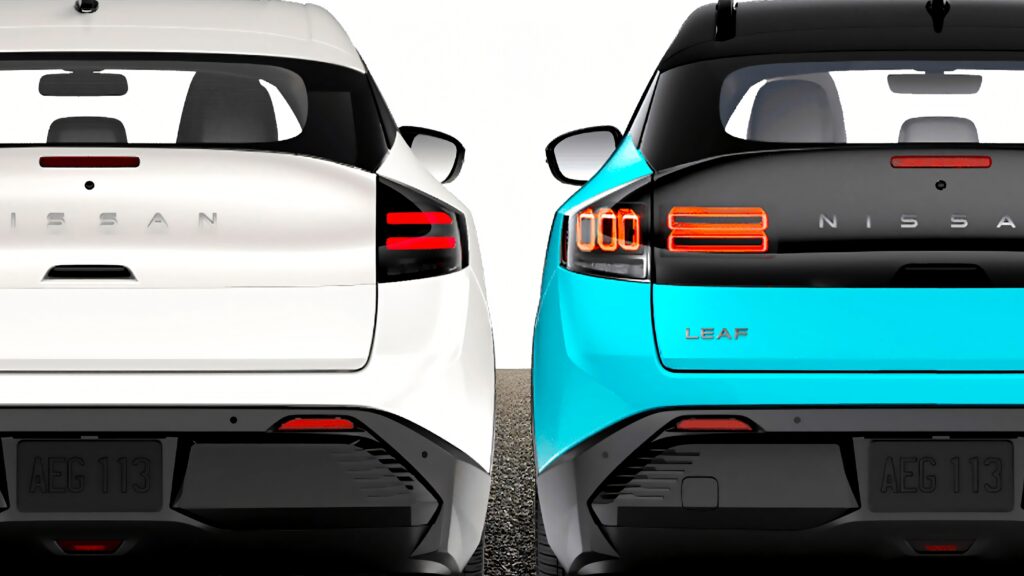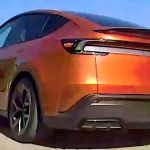

- Nissan has launched the configurator for the 2026 Leaf on its American website.
- Entry- and mid-spec trims feature different taillights compared to other grades.
- These trims lack the 19-inch wheels and dimming panoramic roof found.
Nissan’s third-generation Leaf is here, and it’s stirring up some interesting discussions. Gone is the humble hatchback, replaced by a more modern crossover design. However, when the configurator for the 2026 Leaf went live on Nissan’s US website, we quickly noticed something a bit more puzzling: the entry- and mid-level trims are missing some of the coolest features that come standard in the flagship model.
var adpushup = window.adpushup = window.adpushup || {que:[]};
adpushup.que.push(function() {
if (adpushup.config.platform !== “DESKTOP”){
adpushup.triggerAd(“0f7e3106-c4d6-4db4-8135-c508879a76f8”);
} else {
adpushup.triggerAd(“82503191-e1d1-435a-874f-9c78a2a54a2f”);
}
});
More: Nissan Takes A Leaf From The Z For Its New Mass Market EV
For the American market, the 2026 Leaf will come in three grades: S+, SV+, and Platinum+. Of course, it’s the Platinum+ trim that gets all the love in the press photos. Think 19-inch alloy wheels, Nissan Z-inspired “3D Holographic Taillights”, and a panoramic roof that dims at the touch of a button.
Unfortunately, all these bells and whistles are exclusive to the Platinum+, leaving the other trims looking a little… underwhelming by comparison.
The S+ and SV+ trims take a significant hit on the rear end design. While the Platinum+ flaunts its futuristic taillights, the lower trims settle for a more traditional, plain look with conventional LED graphics. The tailgate, meanwhile, loses the sleeker black trim and opts for a body-colored finish that exposes the handle.
Wheels, Roofs, and Other Slight Disappointments
The entry-level Leaf S+ comes with 18-inch steel wheels topped off with black aero covers, while the SV+ steps up to 18-inch aluminum alloy wheels with a more futuristic design. As for the body, it looks pretty similar to the Platinum+, minus a few key differences: no LED bar between the headlights and, of course, the absence of roof rails.
Predictably, there are some differences in the interior design among the available grades. The entry-level S+ comes standard with dual 12.3-inch displays, while the SV+ and Platinum+ get the fancier dual 14.3-inch screens with Google Built-in.
var adpushup = window.adpushup = window.adpushup || {que:[]};
adpushup.que.push(function() {
if (adpushup.config.platform !== “DESKTOP”){
adpushup.triggerAd(“bb7964e9-07de-4b06-a83e-ead35079d53c”);
} else {
adpushup.triggerAd(“9b1169d9-7a89-4971-a77f-1397f7588751”);
}
});
More: This Isn’t The New Sentra Or Altima, It’s Something Else
Finally, the most expensive Leaf is fitted with the new Bose Personal Plus Audio system featuring extra speakers mounted on the front headrests. It is also the only one that gets the panoramic electrochromic roof with a dimming function.
Range And Power
As for performance, Nissan has yet to drop full specs for the US, but we know the Leaf will come in two powertrain configurations: one with a 52 kWh battery and 174 hp (130 kW / 176 PS), and another with a larger 75 kWh battery and a punchier 214 hp (160 kW / 218 PS).
var adpushup = window.adpushup = window.adpushup || {que:[]};
adpushup.que.push(function() {
if (adpushup.config.platform !== “DESKTOP”){
adpushup.triggerAd(“b25ecba7-3bbb-4ea7-a3a8-dbea91695c07”);
} else {
adpushup.triggerAd(“e46c436a-adeb-4b5e-a2c7-56bc36561c10”);
}
});
Performance figures for the US-spec Leaf remain under wraps. However, the European-spec model accelerates from 0-100 km/h (0-62 mph) in 8.6 seconds and 7.6 seconds respectively, with a top speed limited to 160 km/h (99 mph). Note that all versions of the EV are fitted with an independent multi-link rear suspension.
As for the range figures, the EPA estimate for the larger 75 kWh battery is 303 miles (488 km). The more optimistic WLTP estimates in Europe are 271 miles (436 km) for the 52 kWh battery and up to 375 miles (604 km) for the 75 kWh battery. Both represent a healthy boost compared to the previous generation.
Market-Specific Differences
While the Leaf may be a global car, Nissan has made sure to tweak it a bit for different regions. The US-spec Leaf measures 4,405 mm (173.4 inches) long, 1,810 mm (71.3 inches) wide, and 1,557 mm (61.3 inches) tall, giving it a slight edge in length and height compared to the European version. The weight ranges between 3,955 and 4,370 pounds, depending on the configuration, which isn’t exactly featherlight, but then again, it’s an EV.
More: Here’s What’s Coming To The 2026 Nissan Rogue
Aerodynamics are another area where the US-spec Leaf takes a slight hit. With a drag coefficient of 0.26, it’s a little less slippery than its European counterpart, which boasts a more impressive 0.25 cd rating, thanks to different wheels and tires. On the plus side, the American version gets amber indicators, while the European model features a more refined metal-style rear bumper trim.
Different markets also get their own charging options. The US will see a NACS-compatible charging port, Europe sticks with the traditional CCS port, and Japan gets the familiar CHAdeMO port. However, all regions will get 150 kW DC fast charging capability for the 75 kWh battery pack, so that’s one feature we can all agree on.
When Will It Arrive?
The 2026 Nissan Leaf is expected to hit US dealers in the fall of 2025, with a gradual rollout to other markets, including Europe, Japan, and Australia. Pricing for the US market will be announced closer to that launch date.





